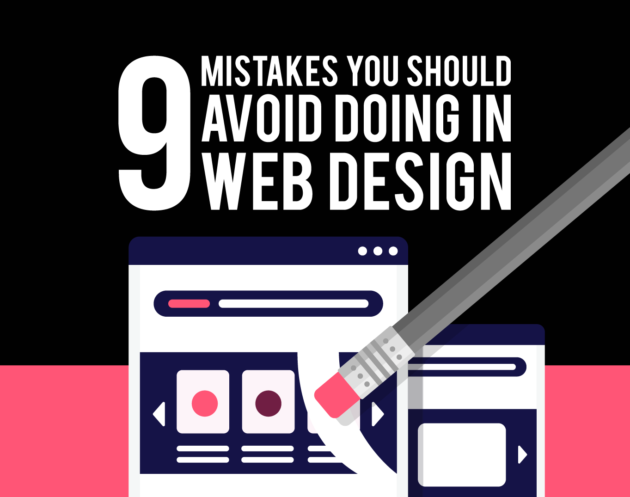There are a million things to think about when creating the perfect website. Creating graphics, choosing colors, choosing the right images, just to name a few. But there is one thing that people like to underestimate when creating a website, choosing the perfect font. Don’t make the same mistake.
Choosing the perfect font can greatly impact the final look and feel of your web design. It seems like a small thing, but it has the power to take your web design to the next level.
We will walk you through all the things you need to know when choosing the perfect font for your design.
What Do You Want Your Perfect Font To Say?
Keep in mind that there are no hard and fast rules that determine the font with the appropriate aesthetics. It’s a matter of font personality, but to some extent, personality depends on familiarity.
Many applications and websites still use a small selection of the most common fonts – retention – when this was the most practical approach to digital typography.
It used to be the case that using system fonts was the safest choice because you can count on them to be in good condition and available on most devices.
Today, there is no need to compromise by choosing the usual “workhorse” font. Web fonts tend to be just as reliable as system fonts, but with more choice.
But if you still want to find an unusual font that will help you make the project stand out, dozens of commercial-type foundries sell proprietary fonts either at a flat fee or at a monthly price.
If you want a unique, custom-written font – and who wouldn’t – it can be expensive and time-consuming, so start by looking for offers in foundries.
Who is Your Audience & What Languages Do They Speak?
Your app or website is likely to reach users around the world. Even if you provide content in one language, many people use the translation feature in the browser so that the content is displayed in their native language.
In other words, if the font you choose contains only basic Latin letters, automatic translation takes the typography of your project out of your hands – moving your layout to another font for those letters, giving it a “random effect” where individual, accented letters change and protrude.
Choosing a font that includes characters for other languages guarantees that the design of your page will remain consistent for a wider range of readers.
This may sound like a lost battle, but there are many font families that include support for multiple scripts.
How to Choose The Perfect Font For Your Website
Haven’t chosen brand fonts yet? Here are some key things to consider when choosing a web design font:
Figure Out Your Brand’s Personality
Your choice of font should represent the personality of your brand in order for your design to be impressive. Are you a traditional type of business or are you minimalist and modern or fun and unusual? Would you describe your company as retro, classic, nervous, funky?
Check out this article for additional questions to ask yourself to discover your unique brand personality.
Once you answer these main questions, you will understand the personality of your brand and the look and feel you need to target with your web design. Based on that identity, you can now choose the right fonts for your brand.
Choose A Perfect Font That Fits Your Brand
Let’s say you own a vintage clothing store with a cool, modern atmosphere. You can mix an old-school, groovy-looking title font with a classic sans-serif base text font.
For example, if you use a nice old-looking font like Arvo for headlines, then it’s a good idea to use a sans-serif like Open Sans, which is known for its readability, for your body text.
This will give you a balanced look that is both timeless and modern and goes perfectly with your cool, retro brand.
Or let’s say you are a law firm or a top cosmetics brand and you want your typography to communicate trust and professionalism with a touch of class.
You can be stylish, yet classic and elegant with serif fonts like Frank Ruhl Libre or Playfire Display to really show potential customers that you care about reliability and superior service.
No matter what type of font you end up choosing to match your brand identity, make sure the font is secure for the web and easy to use, and suitable for most browsers.
Rank Your Fonts by Importance
As a rule, never use more than three fonts on your website. This practice will not only improve the design of your website but limiting the number of fonts will also make your web page more accessible.
Each of these fonts should have a different level of importance. To maintain a clear sense of hierarchy, choose a primary, secondary, and optional font with an emphasis:
Your primary font is the most visible and should be used in the headers of the website. This is the font that will be most associated with your brand, even if it is not used most often on the entire website.
As a result, the primary font may be more dominant and clearer than other fonts on your site.
Your secondary font will be used for most of your written website content, including paragraphs, descriptions, blog articles, and more.
While your primary font can be appealing and unique, your secondary font should be, above all, very readable. Too ornate fonts are harder to read when applied to long pieces of text.
Finally, you will only use your accent font for very specific purposes. The accent font is usually reserved for calls to action when it comes to websites, drawing attention to your most important button on the page. Font for your logo design is another option that can be used as an accent font.
Still Undecided?
Choosing the perfect font for your website depends entirely on the goal you would like to attain. Once you give some thought to the style, you will want to understand how will your brand be presented.
And fonts are the right tool for that. Does one want to be elegant, serious, or traditional? Choose a sublime font with serifs. Want to seem modern and minimalist? Choose a clean font without a serif.
Looking for something in between? Combine fonts to realize almost any style you wish.





1 comment